The Best Ways to Heat Your DIY Workspace
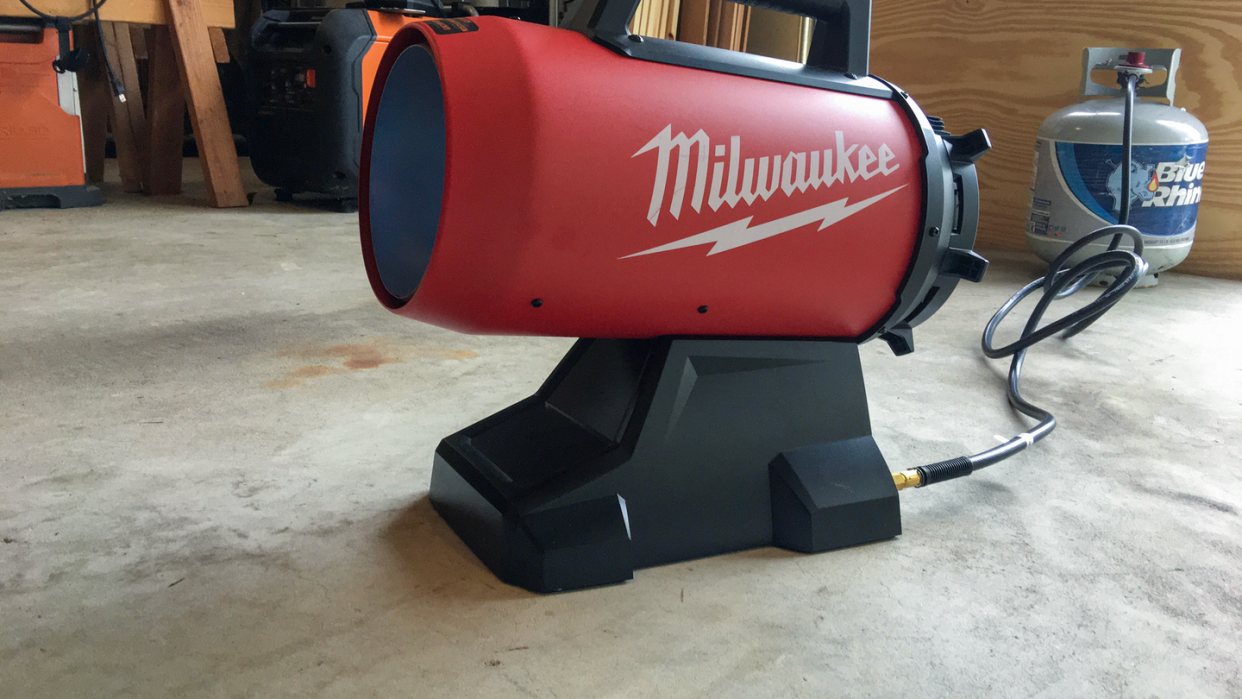
"Hearst Magazines and Yahoo may earn commission or revenue on some items through these links."
Cold weather robs us of mobility, enjoyment, and safety. Cold-stiffened muscles dulls our movement–and our senses. Before you know it, you can’t concentrate on whatever it is you’re trying to do, whether it’s working in the garage, hanging Christmas lights, doing a construction project outside, or just relaxing outside with a little work.
There are several solutions to being cold, but the easiest is to take a cordless and portable, heat source with you. The last several years have seen a breakthrough in the development of mobile heat sources. We’ve tried most of them. Below we explain them and their relative benefits.
Key Takeaway: There’s a mobile heat solution that works for you, your budget, the heat output that you need, and the degree of mobility that you require from it. Mixing and matching these heat sources allows you to heat just yourself or, to some extent, yourself and your surroundings. Portable heat sources are just that: they are cordless and completely mobile—no 120-volt power source required. That’s true whether the heater uses a power tool battery, burns kerosene or propane, or uses an exothermic (heat producing) chemical reaction.
Wearable Heaters
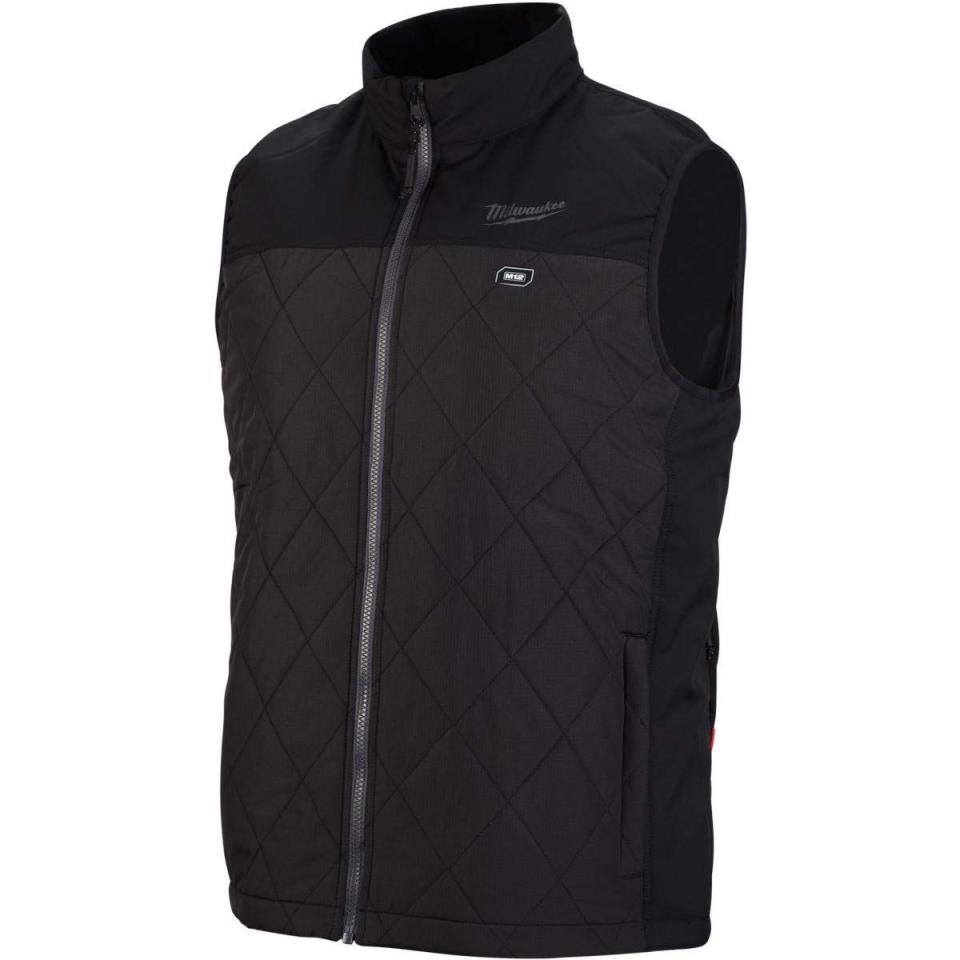
Milwaukee M12 Heated AXIS Vest
Amazon
$219.00
MilwaukeeMilwaukee’s M12 System
Power tool manufacturer Milwaukee is headquartered in Brookfield, Wisconsin, not far from the shore of Lake Michigan. Winters there are long, fiercely cold, and windy. It makes perfect sense that the company has taken the forefront developing heated work clothing. The company powers its heated apparel, work jackets, vests, hoodies, and bib overalls with the same 12-volt battery that powers its small but highly capable power tools.
The system uses the battery to feed electrical current to a carbon-fiber grid sandwiched between a stretch polyester insulated shell and a liner designed for heat transfer.
Jeff Dengate, a hardcore DIY guy and woodworker (and Runner’s World Runner-in-Chief), has been test driving the heated vest:
“Winter typically means that I have to tackle the to-do list of projects that can be handled from inside my basement. It’s just too darn cold out in my garage. I’ve considered installing a heater so I can work comfortably year round, but have not. Instead, I decided to get a Milwaukee M12 heated vest to help keep me warmer in those rare times I have to use the shop tools in the garage. Unfortunately, my local Home Depot only stocked men’s L & XL, which are comically large for my 6-foot, 160-pound frame. So, I spun around the display to the women’s side and found that a medium fit me perfectly!
“At first, the battery was a little annoying, as it bounced off my left kidney. But, you can shift the battery forward or back of your centerline. I’ve since adjusted to the weight and bulk, and don’t notice it anymore. What I have noticed is that if I wear it under a jacket, I usually have to turn it down to 1 (lowest of 3 settings), even when it’s in the 30s in my garage. Bonus, I’ve found I grab it on slightly chilly days when I just don’t feel like turning up the heat while I work my day job from home. Why heat the whole house if I can crank up my own space a few degrees cheaply?”
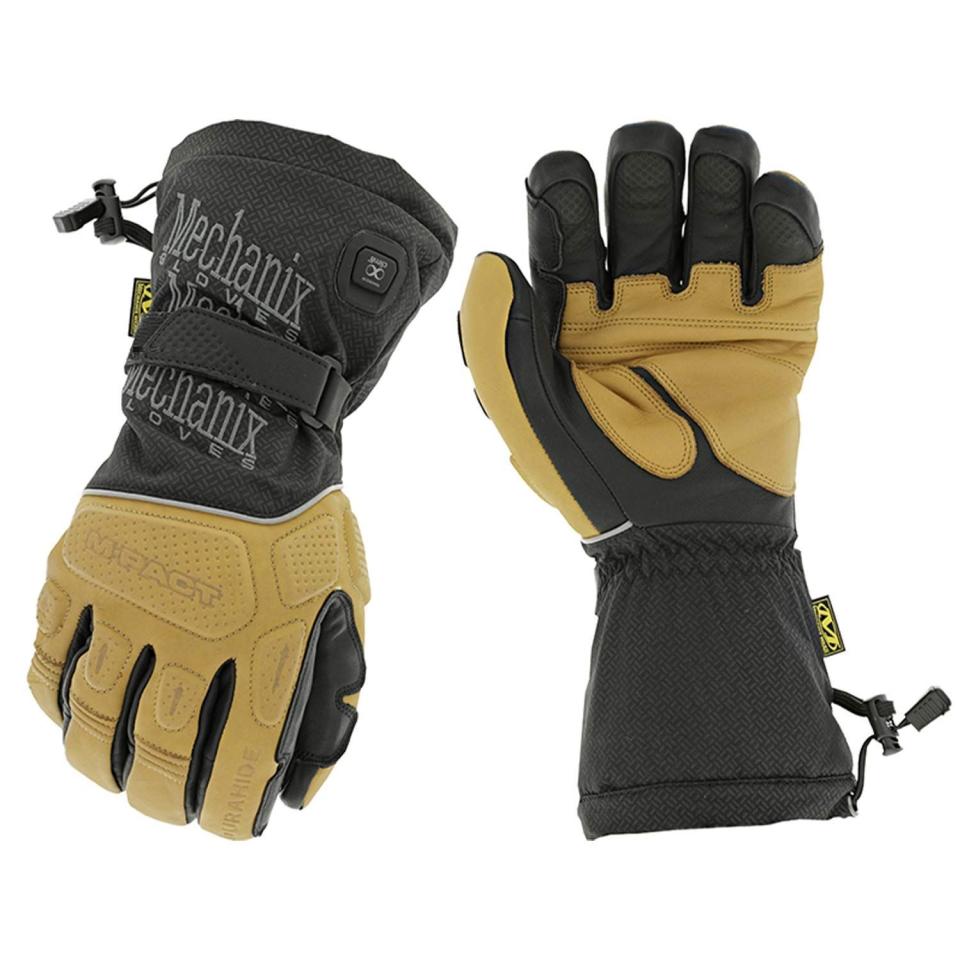
Mechanix Wear ColdWork M-Pact Gloves
amazon.com
$274.67
Mechanix WearMechanix Wear Cold Work M-Pact Gloves
Last winter, I slid on a pair of the Mechanix Wear Cold Work M-Pact Gloves and went to work in my garage, around my house, and outside testing hand tools and power tools for our Popular Mechanics. The gloves are powered by an 8.4-volt battery that tucks into a pocket inside them. Most surprisingly, they operate on a thermostat. You set the temperature range when the heating circuit will be energized and the gloves do the rest. When the temperature inside the glove falls below the setting, the heating circuit is energized.
In my report, I describe how I tested the gloves over several sessions, for several hours at a time in both dry and soggy cold conditions. The temperatures indoors and out varied from about 20 degrees Fahrenheit to the mid-30s as I handled wood and metal, used power tools such as drills and a circular saw, and worked with screwdrivers, wrenches, and ratchets. Like any pair of gloves, they’re most helpful when your aerobic activity slows and your body is not generating as much heat to keep your hands warm. When you find yourself standing still in one place, particularly with the wind blowing, operating a miter saw or handling metal, these gloves are at their best.
Cordless Heaters
Cordless heaters burn propane or kerosene and energize their fan and ignition circuit with the same power tool battery that you would use in a cordless drill or circular saw. These appliances will heat you and your surroundings. It’s important to understand that these appliances are intended to be used in open-air environments or those that are drafty, such as a partially completed house without the windows in place or a garage with the door open.
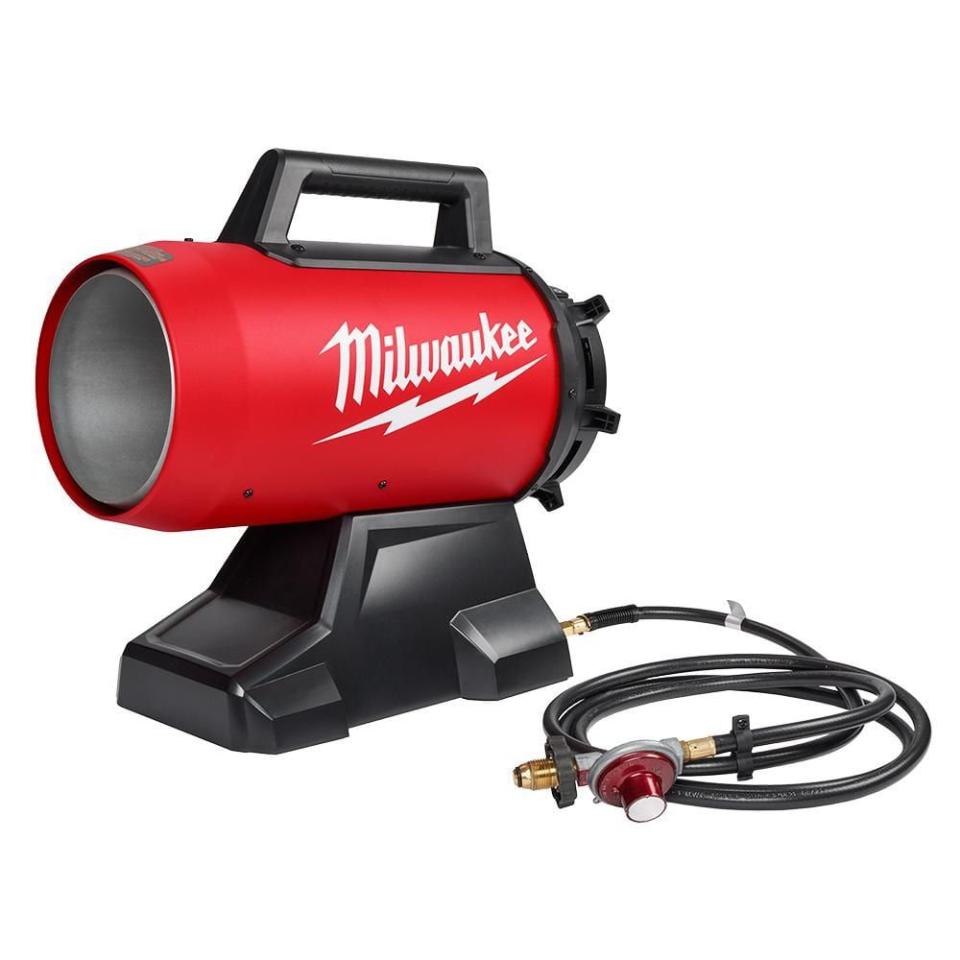
Milwaukee M18 0801-20 propane heater
homedepot.com
$229.00
MilwaukeeMilwaukee M18 Heater Model 0801-20
We tested Milwaukee’s M18 cordless propane heater and we were amazed at how clean, quiet, easily portable, and effective it is. Slide in an 18-volt battery into the appliance, as if it were any of the company’s power tools, then hook its 10-foot hose and regulator up to a 20-lb propane tank. Press the heater’s igniter button and just like that you’ve got a warm environment for work or play. On high, it puts out 70,000 BTU. That’s a lot of worksite heat. But you can adjust its output down to 30,000 BTU (which is still considerable).
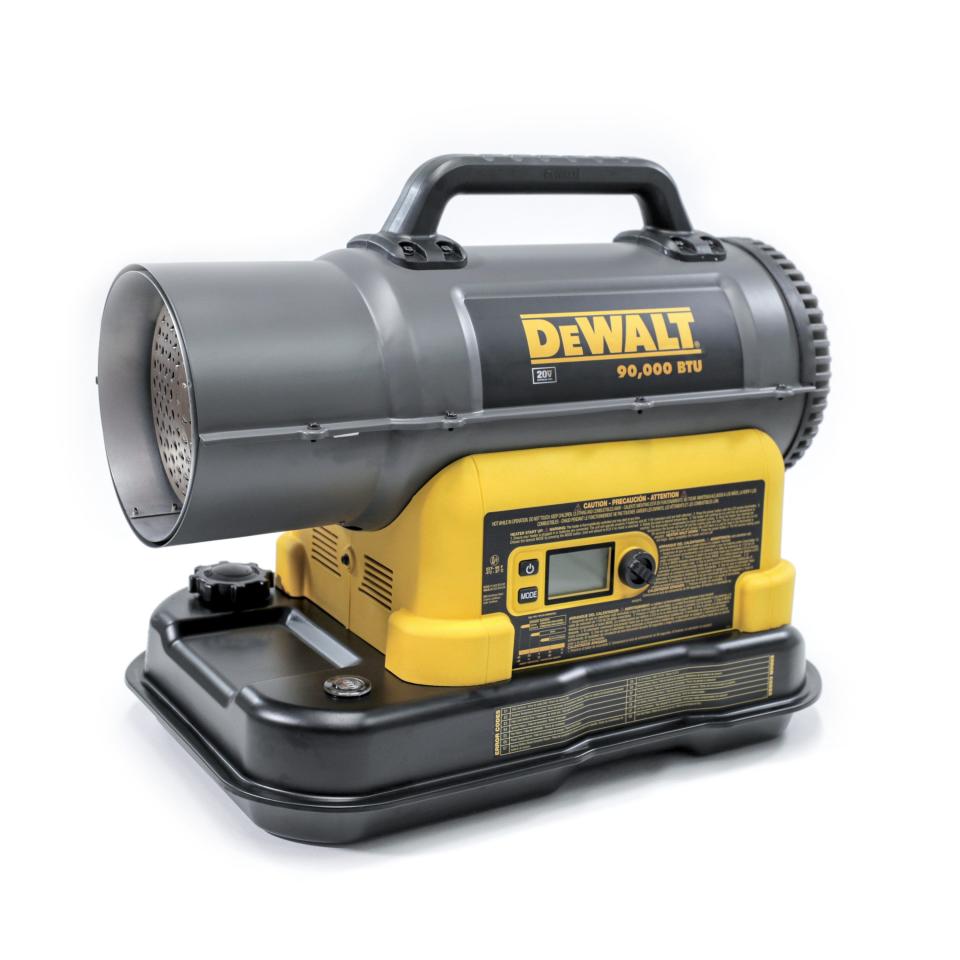
DEWALT F340990 cordless kerosene heater
lowes.com
$349.00
DeWaltDeWalt Kerosene Forced Air Heater F340990
We haven’t tested DeWalt’s cordless heater, but we think the design has merit for a number of reasons. First, if you’re on the DeWalt cordless system, it’s an obvious fit because it’s powered by a DeWalt 20-volt battery. Second, it’s kerosene fired. That means it’s easy to refill it from a 1-gallon or 5-gallon kerosene fuel tank. Unlike propane, you don't have to take the tank to a propane refill station.
Disposable Warming Pads
There are a number of these disposable heat-producing pads today, but the most well known version is HotHands, a US-made product (by Kobayashi Consumer Products, headquartered in Osaka, Japan). We picked up our test samples at a local Home Depot. I was interested in trying them out when on a project assignment years ago, a New York State carpenter told me that he buys them in bulk for himself and his crew and they go through several boxes every winter.
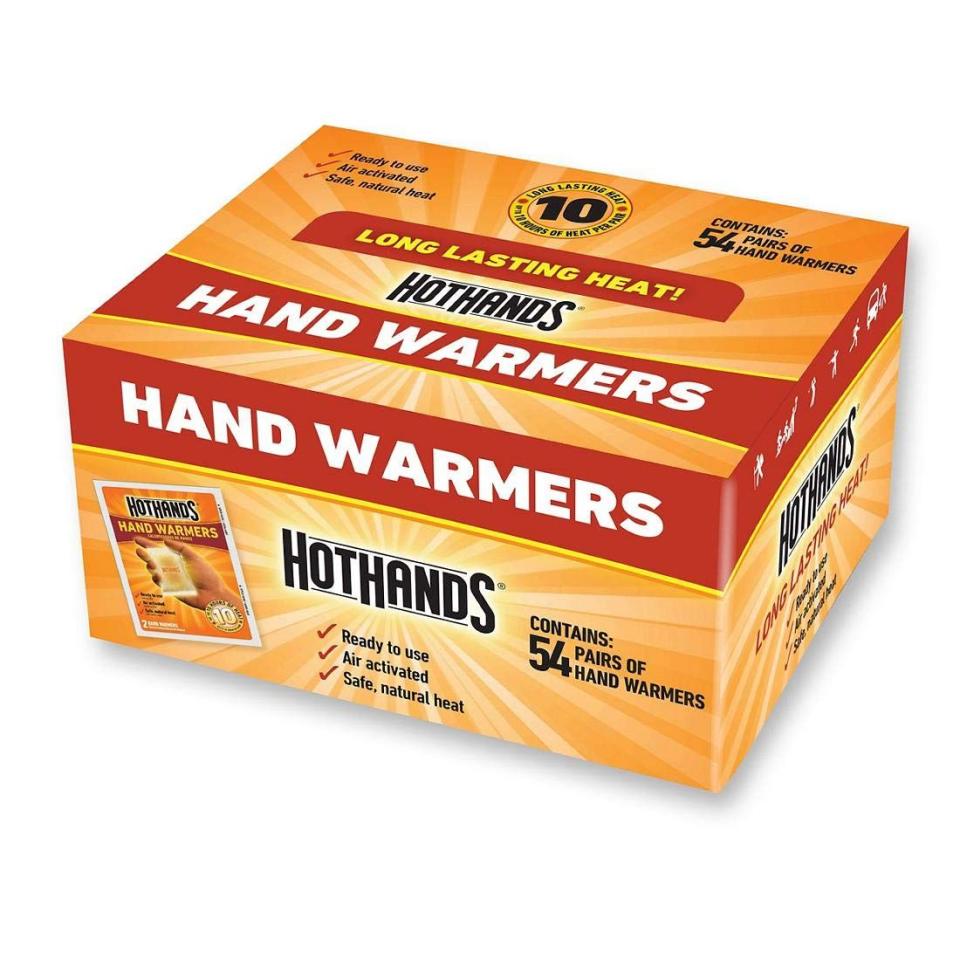
HotHands Hand Warmers
amazon.com
$37.40
HotHandsHotHands Hand Warmers
HotHands says that its small disposable pouches produce a temperature in the range of 100 to 180 degrees F for up to 10 hours (we didn't measure their heat output). Inside each pouch are iron particles, salt, vermiculite, and activated charcoal. When you open the sealed foil pouch, you expose these ingredients to the air and moisture, producing an exothermic (heat producing) chemical reaction. When the little pouch is done producing heat, throw it away.
The warmers come in a variety of sizes and types (for example, some are meant to be positioned under your toes inside a boot). We tried the hand warmers and found that they work, but it's up to you to find the best way to work with them. In our case, slipping them inside various work gloves or between a mitten and the liner, did increase our hand temperature, but we also found that the warmers can move around. Thus, you have to stop what you're doing to reposition them. Our test results explain why HotHands developed an insulated fleece mitten; each has a pocket into which you can slip one HotHands pouch. We haven't tried these mittens but their design strikes us as valid.
We also found that although the packets do produce heat over a long period of time, the exothermic reaction is such that it seems to produce a plateau, where the heat is helpful for a time, but then wanes and stops being helpful. The colder the weather, the more pronounced the effect. It could be that the sweet spot for these hot packs is cool to cold weather (let's say borderline temperatures where you may or may not need gloves, depending on your cold tolerance and aerobic activity). In really cold weather, you'll end up disposing of a pack while its still putting out heat, it's just not putting out enough heat to be helpful. Depending on where you live, your outdoor activities and your level of cold tolerance, you'll go through a lot of these packs. It makes sense to buy them in bulk.
You Might Also Like

